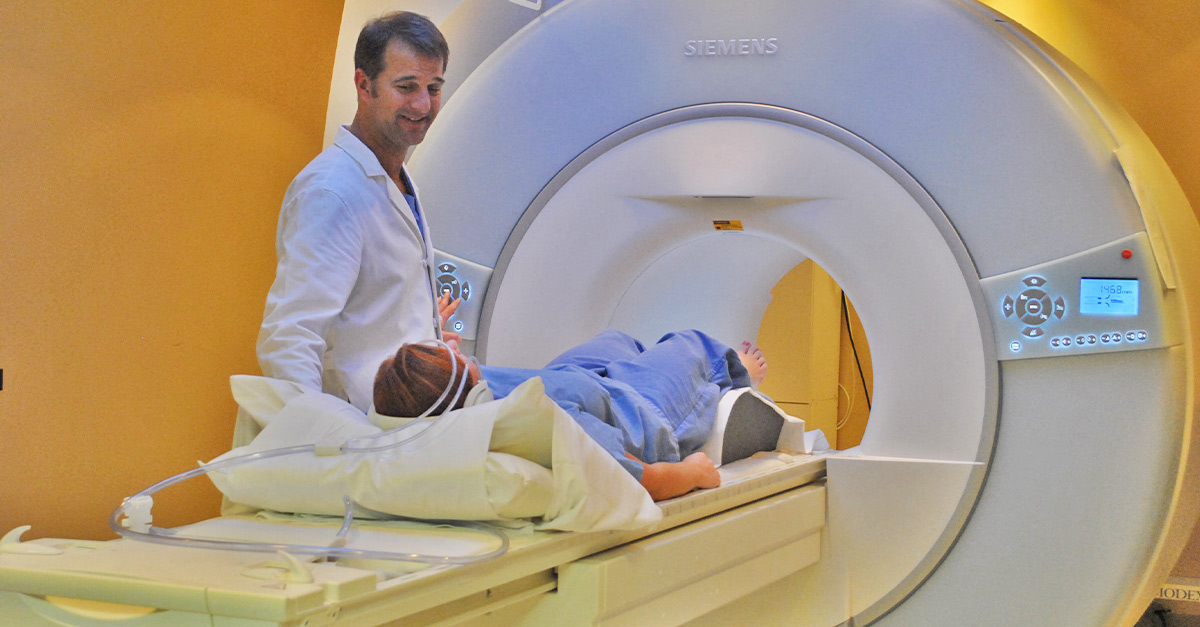As with any new experience, getting ready for your first MRI can feel overwhelming. Knowing exactly what to expect can help put you at ease. The MRI process is painless and requires little preparation, but here’s a closer look at what your scan will entail.
Getting Ready for an MRI
The MRI machine uses strong magnets and radio waves to create images of your organs and tissues. Due to the machine’s magnetic field, patients must not have any objects in or on their bodies that could be attracted to the magnets. Before your appointment, you’ll receive information about what not to wear, but in general, you’ll want to remove or avoid wearing underwire bras, dentures, watches, wigs, eyeglasses, hearing aids, jewelry, and any cosmetics that could contain metals. Even if the machine’s magnet doesn’t attract these objects, it can still distort the images.
Additionally, people with implanted devices that contain metal, such as intrauterine devices, pacemakers, joint prostheses, and metal screws or plates will need to avoid MRIs. But there are other instances that may raise concern — for instance, welders may need to consider a different imaging option, as well as women who are pregnant. If you are unsure about having an MRI, or there’s any chance you could have metal in your body, talk to your doctor before the procedure.
The MRI Process
The MRI machine is a circular tube with open ends. Our MRI is shorter and has a larger opening than traditional MRI machines. Depending on the body part being scanned, your head may be outside of the bore of the machine. To start the imaging process, the technologist will position you on a table that slides into the tube. Through an internal microphone, you’ll be able to communicate with the MRI technician, who will be monitoring you from the next room.
The machine will generate a strong magnetic field around you and direct radio waves into your body. You won’t feel any of this happening, and there won’t be any moving parts that you can see. Nonetheless, the magnets will make sounds such as taps and thumps that are sometimes considerably loud. You may ask your technologist if you can wear earplugs or have music playing.
To gain better visibility of body parts on some exams, a contrast agent may be injected via an IV line prior to the scan. Some patients report cold sensations and mild nausea or headache with the contrast, but these side effects are rare.
Regardless of whether or not you receive contrast, you can expect the MRI to take 45 minutes per body part, or longer. It is important to remain very still during the process, and you may even be asked to hold your breath during certain portions of the scan. Depending on what your doctor is looking for, you might also be asked to perform certain activities, such as tapping your fingers together. This can help doctors assess brain activity during tasks.
After the MRI is complete, you can resume your normal activities immediately. A radiologist will review your scans and communicate their findings to your doctor, who will then discuss the results with you.
Here at Outpatient Imaging Culpeper, we aim to make MRIs as comfortable as possible. Our technologists will position you comfortably and stay in contact with you so that even if you are anxious or claustrophobic, you will be able to successfully complete your exam. Find out more about our patient-centric approach to MRI scans or schedule your appointment by calling (540) 321-3190.

